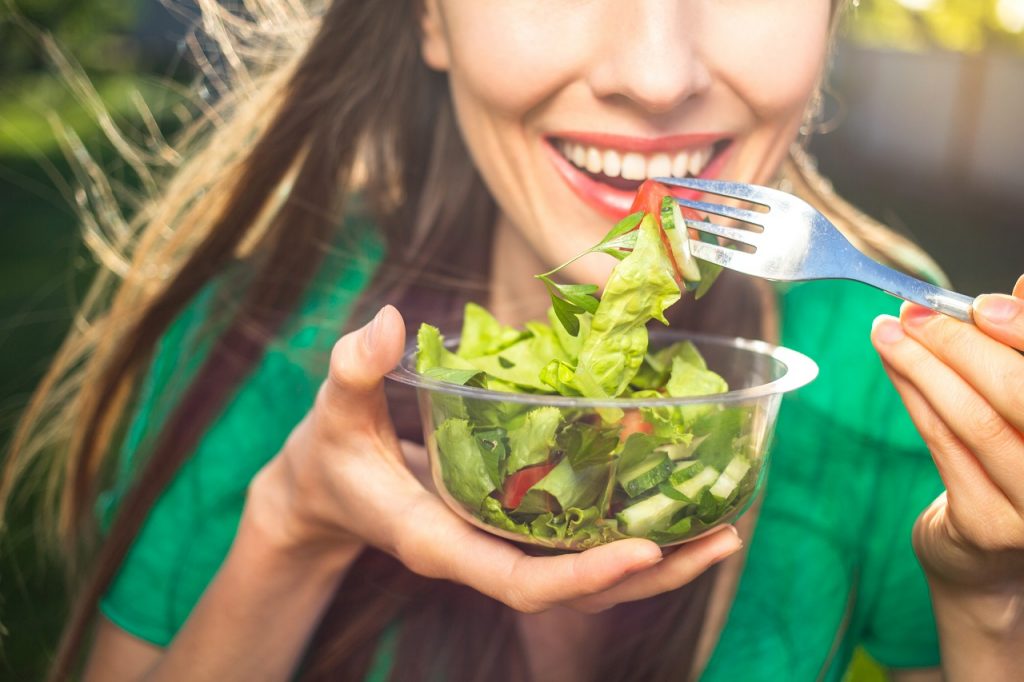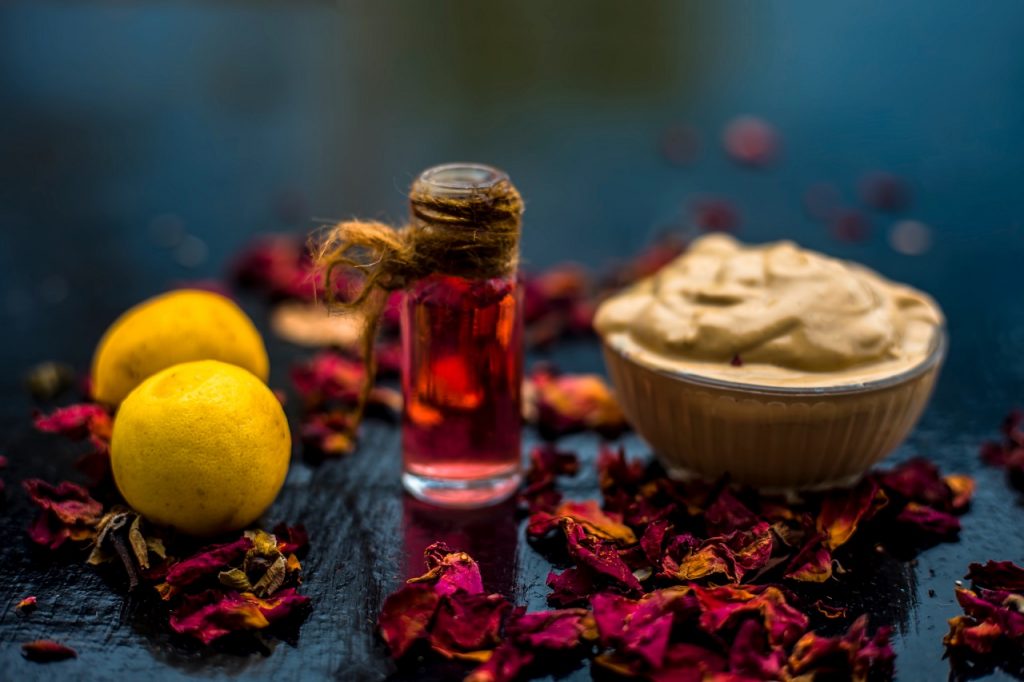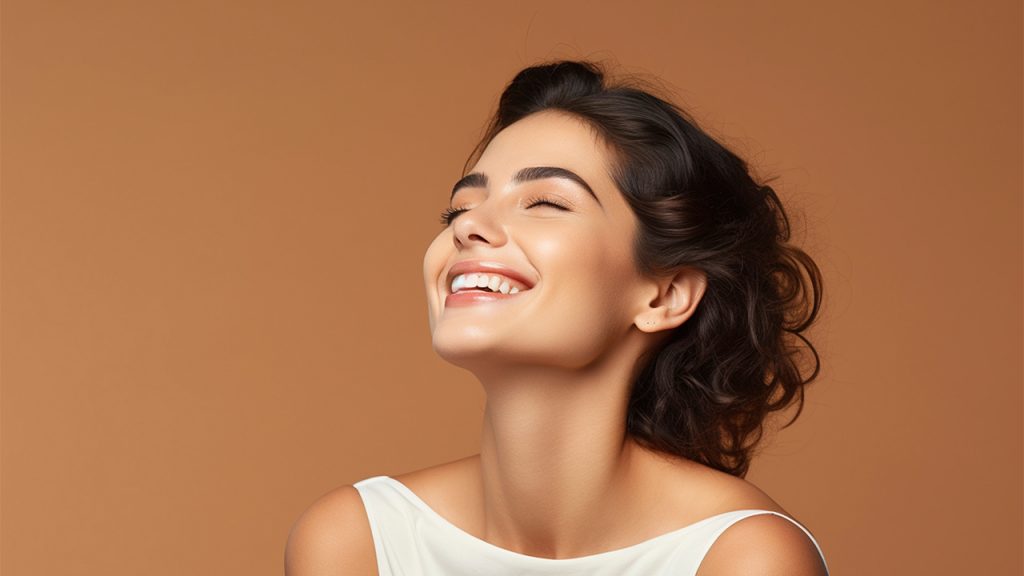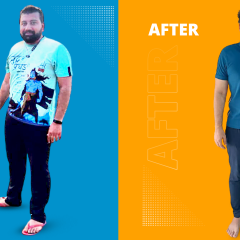 They say real beauty comes from within. Well, people may have different perspectives over this quote but in the opinion of a Nutritionist, what food you put inside your body, is what reflects on your skin! Ageing is a normal physiological phenomenon which starts from the inside out. This makes it imperative to take care of your diet to prevent the effects of ageing. With advancing age, the proteins and pigments of our skin start to deteriorate. However, with a healthy lifestyle and good nutrition, in the absence of disease, one can still manage to have a plump skin. Just like our emotional troubles can be seen on the face by the way of our expressions, the internal troubles of our body show up on the skin. If you feed your body with the right kind of food, it radiates right on the skin. Let’s look at some foods to get that younger looking skin you’ve always wanted!
They say real beauty comes from within. Well, people may have different perspectives over this quote but in the opinion of a Nutritionist, what food you put inside your body, is what reflects on your skin! Ageing is a normal physiological phenomenon which starts from the inside out. This makes it imperative to take care of your diet to prevent the effects of ageing. With advancing age, the proteins and pigments of our skin start to deteriorate. However, with a healthy lifestyle and good nutrition, in the absence of disease, one can still manage to have a plump skin. Just like our emotional troubles can be seen on the face by the way of our expressions, the internal troubles of our body show up on the skin. If you feed your body with the right kind of food, it radiates right on the skin. Let’s look at some foods to get that younger looking skin you’ve always wanted!
Foods For Younger Looking Skin
- Water: As simple and feeble as it may sound, water is the most important component of a skincare regime. In all forms, whether luke warm, chilled or infused, water is the most effective tool for younger looking skin and to fight any skin abnormalities. It cleanses the excess metabolites and harmful substances that may accumulate beneath the layers of skin. Water helps keep the skin moisturised and flush out infectious agents.
- Berries, Melons and Citrus Fruits: Berries are natural chemical exfoliators. They contain salicylic acid which is a popular ingredient in beauty products known for anti-inflammatory and antibacterial properties. Berries are also rich in Vitamin C and ellagic acid that can help reduce acne. Rich in Vitamin A, C and B, melons can prove to be effective in maintaining good skin health. They can also improve your digestive system and prevent constipation. This, in turn, aids in clearing up the skin. Melons are also effective in treating psoriasis, a dry skin condition that causes itchy, flaky and red patches of skin. The rich Vitamin C content of citrus fruits can effectively fight free radical action, which prevents skin ageing. Citric acid helps curb the bacterial action and pathogens present under the skin. As we age, our body’s ability to produce collagen decreases and the elasticity of the skin too. Vitamin C helps repair and rejuvenate the skin, helping in wound healing and building connective tissue, leading to younger looking skin.
- Turmeric (Curcuma Longa): Being the most potent spice, Turmeric helps fight cell damage, chronic disease and aging, helping maintain younger looking skin. All this due to the powerful pigment, curcumin.
- Nuts and Seeds: Nuts are densely packed with a variety of skin healthy nutrients such as proteins, vitamin E, essential oils, minerals, and antioxidants. Soaked almonds, walnuts, flaxseeds and sesame seeds are the richest sources of vitamin E – which are very helpful to protect the skin from the UV rays of the sun. Vitamin E also helps strengthen your skin, avoid skin infections and give it a radiant glow.
- Dark Chocolate: contains cocoa flavanols. These are very potent antioxidants that protect the skin from the oxidative damage caused by pollution or sunlight. It also protects the skin by enhancing blood flow, which helps by nourishing and moisturizing it. Make sure to choose only dark chocolate with at least 70% cocoa in it.
- Tomatoes: Tomato and tomato juice are high in lycopene, a natural carotenoid that fights pigmentation and darkening due to ageing or stress.
- Virgin Coconut Oil: Used in cooking, it slows down the aging process by lowering oxidative stress and relieving pressure on the liver, it nourishes the skin and hair to reduce the appearance of wrinkles and clears dark patches and cellulite.
- Avocados: are high in monounsaturated (MUFA) and polyunsaturated (PUFA) fats that are essential to nourish the skin and prevent dryness. It also acts as an anti-inflammatory to keep the immune system effectively functioning. The lutein and zeaxanthin in this fruit may help to protect the skin from UV damage. It is also full of Vitamins A, B, C, E, and K which helps you get the glow of younger looking skin.
- Leafy Greens: Spinach, Collard greens, Radish greens and Kale are excellent for replenishing tired skin and dark under-eye shadows due to their high iron and magnesium content. These leafy greens are rich in Vitamin K that improve skin cell regrowth for a better complexion.
- Cucumbers: are more water than anything else. Oh so hydrating! Thus, they possess an extraordinary cooling effect. The peel of a cucumber contains antioxidants, Vitamin C and K, which can aid in skin whitening and can also reduce the appearance of fine lines. They also help in reducing puffy eyes and dark circles.
We hope this article helps you achieve that younger looking skin you’ve always desired. Before you switch to any of these foods, please ensure that you reach out to your doctor, nutritionist or dietitian in case you have allergies or any underlying medical conditions. For more on skin care, check out Healthy Reads or speak to a GOQii Coach by subscribing for Personalised Health Coaching here.
#BeTheForce
 Imagine achieving younger, glowing skin without the need for makeup… does it sound impossible? Nothing is impossible when you have the right means to achieve your goals. Today, I’ll share some simple yet amazing natural face masks that are both economical and effective!
Imagine achieving younger, glowing skin without the need for makeup… does it sound impossible? Nothing is impossible when you have the right means to achieve your goals. Today, I’ll share some simple yet amazing natural face masks that are both economical and effective!




